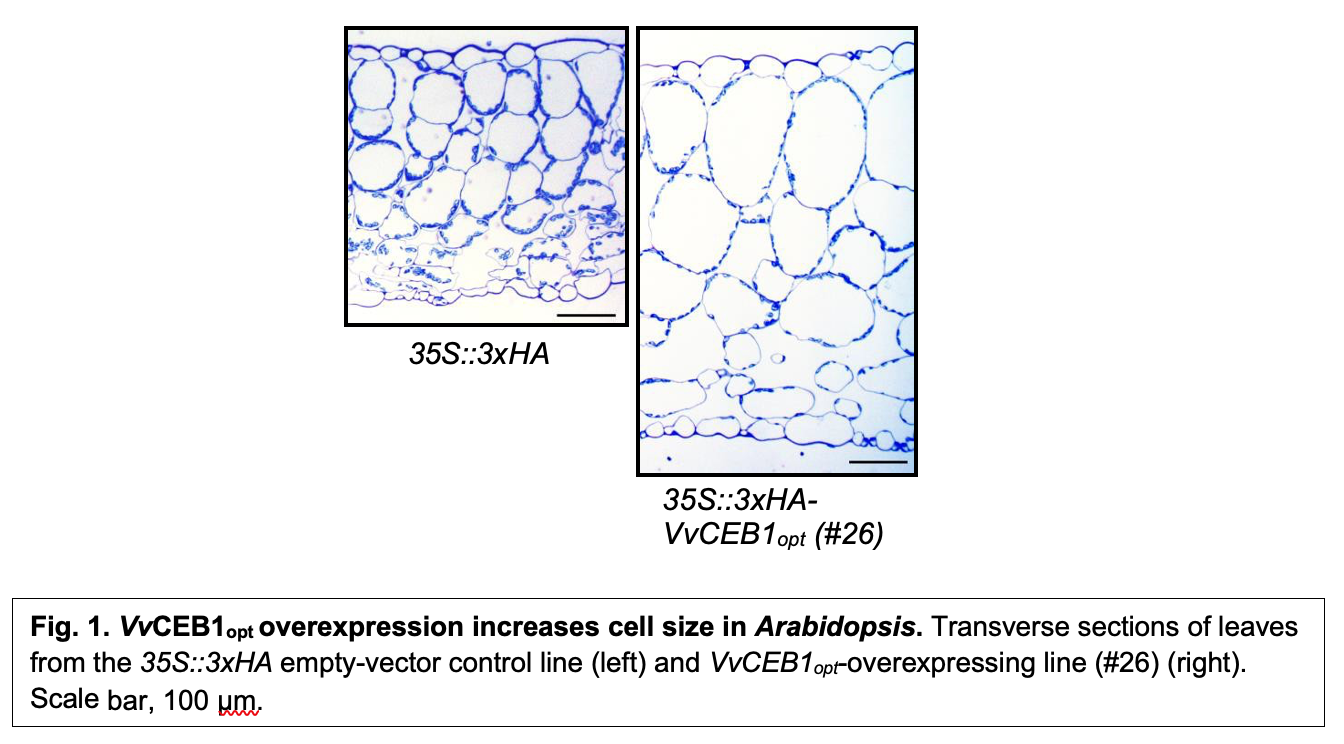Background:
A novel technology to increase tissue succulence in plants using genetic engineering. Tissue succulence is an important plant trait that improves the drought attenuation of plants, improves salinity tolerance, and can optimize the performance of crassulacean acid metabolism. As climate change brings hotter and drier conditions to agricultural production, the ability to increase the productivity of crops through improved salinity and drought tolerance is vitally important. Increased tissue succulence in the plants results in up to a 1.7-fold increase in leaf thickness (Fig. 1), up to a 1.8-fold increase in leaf succulence, up to a 2.3-fold increase in leaf dry weight (Lim et al., 2018). Additionally, this method increases seed production by up to 3.2-fold in plants. In addition to increasing growth, tissue succulence results in plants with improved tolerance to both acute and chronic drought and salinity stress (Fig. 2). These advanced traits are the result of increased leaf water content, unexpected reduction in stomatal density, reduced stomatal aperture, and reduced salt uptake (Lim et al., 2020).
Technology:
The genetic engineering of tissue succulence was developed using the overexpression of a modified helix-loop-helix transcription factor from a wine grape.
Advantages:
- Plants retain and store water better
- Increased biomass and seed production in plants
- Improves drought tolerance
- Improves salinity tolerance
- Improves the ability of plants to perform crassulacean acid metabolism
Patents:
Publications:

![Fig. 2. VvCEB1opt overexpression improves drought stress tolerance under both acute and chronic drought conditions. (a) Representative images of four VvCEB1opt-overexpressing lines (#20, #25, #26 and #30) and the 35S::3xHA [empty-vector (EV) control] line at 14, 29 and 33 days after germination. Water irrigation was stopped at 14 days after germination, and withheld for 15 days and re-watered for 14 days. (b) Survival rate (n = 3 replicates with 60 plants per replicate).](https://unr.technologypublisher.com/files/sites/screen-shot-2020-10-08-at-1.12.06-pm.png)
UNR16-002

